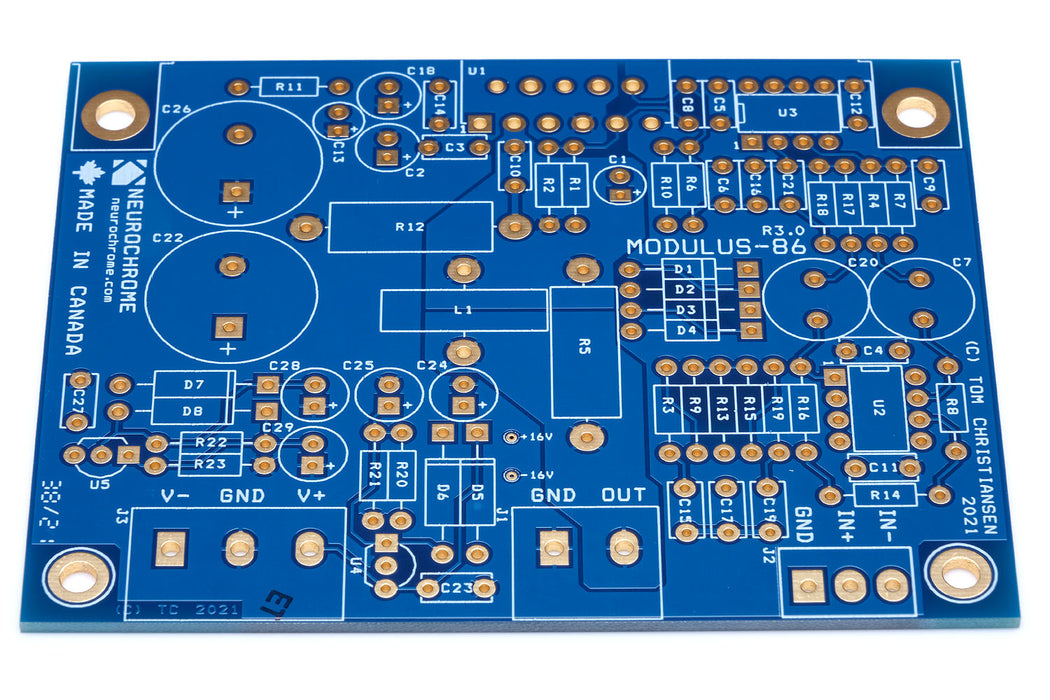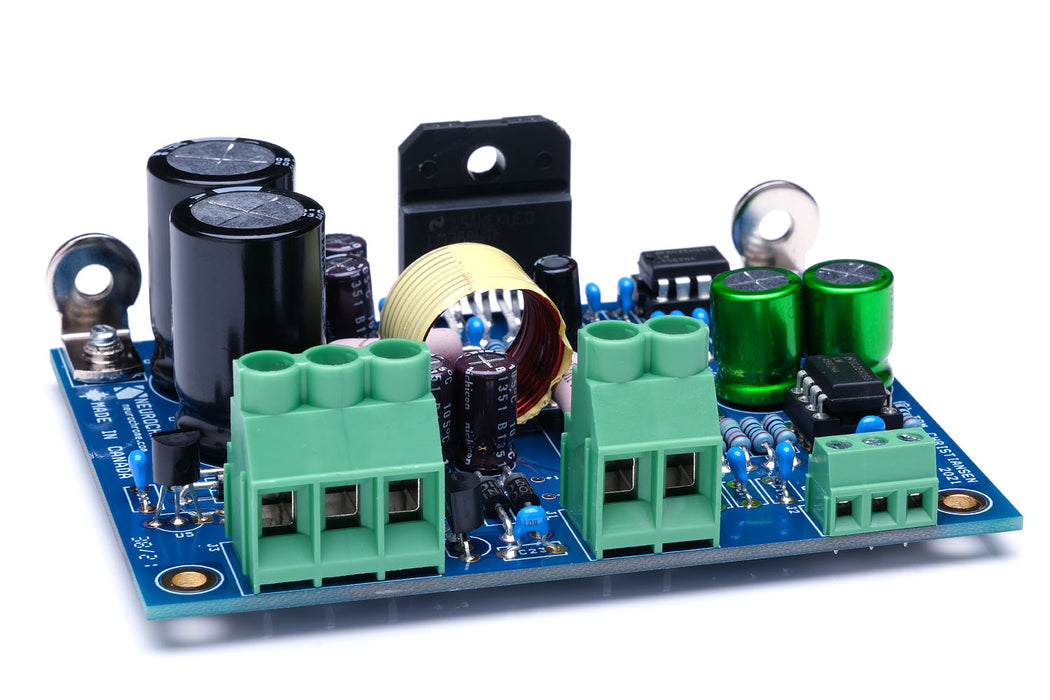-
The Modulus-86 is optimized for ultra-low distortion. The result is a crystal clear and non-fatiguing sound that is revealing without being sterile. Due to the ultra-low noise floor of the Modulus-86, builders experience complete quiet between tracks even with high-sensitivity speakers.
Key Features
- Mono construction: One Modulus-86 board per channel.
- World class performance ensured by an error correction circuit with local, low-noise power supply regulators.
- Power supply agnostic by design. High performance is attained with unregulated power supplies and with switch mode supplies.
- Differential (balanced) input which eliminates hum and ground loop issues. Can be used with single-ended (unbalanced) sources as well.
- Four-layer PCB optimized for minimum power supply and ground impedance by the use of copper planes and pours. All ground management is handled on the PCB.
- On-board EMI/RFI input filter and ESD protection.
- All through-hole construction with socketed ICs.
- Bill-of-materials includes a Mouser Electronics Project Link for ease of parts ordering. Parts cost: $50.
Build difficulty (1-5): 2 (easy-to-moderate)
All Neurochrome circuit boards are fully electrically tested by the manufacturer. The boards are gold plated, RoHS compatible, and are made in Canada.

Modulus-86 Build Process
To get a feel for what is involved in a Modulus-86 build, please view the build video below.
-
The graph below shows the THD+N vs output power for the Modulus-86 Rev. 3.0.

The table below lists the key specifications for the Modulus-86 Rev. 3.0. For the full specifications, please see the data sheet on the Downloads tab.
| Parameter |
Value |
Notes |
| Output Power |
60 W |
4 Ω, < 0.01 % THD+N |
| Output Power |
40 W |
8 Ω, < 0.01 % THD+N |
| THD |
-128 dBc
(0.00004 %)
|
40 W, 8 Ω, 1 kHz |
| Multi-Tone IMD Residual |
≤ -140 dB Ref.: 40 W
|
AP 32-tone, 40 W, 8 Ω |
| Total Integrated Noise and Residual Mains Hum |
13.7 µV RMS |
20 Hz - 20 kHz, A-weighted |
| Gain |
20 dB |
Can be increased by adding a resistor |
| DC offset |
≤ ±0.3 mV
≤ ±2.0 mV
|
Typical
Guaranteed by design
|
| Finished Assembly Dimensions and Weight |
91.2 × 69.7 × 27.5 mm
90 g
|
(W × D × H)
|
| Recommended power supply |
Power-86 with 2x22 VAC, 160-300 VA power transformer |
| All parameters are measured at a supply voltage of ±30 V DC. |
-
The block diagram for the Modulus-86 is shown below.

The Modulus-86 uses one channel of an LM4562 precision audio opamp and an LM3886 power amplifier IC to form a balanced, composite power amplifier. In this configuration the LM4562 is used both to provide error correction for the LM3886 and to provide a balanced input for the composite amp. Another LM4562 completes the front-end of the amplifier.
The Modulus-86 is power supply agnostic by design. This feature is unique to the Neurochrome Modulus amplifiers. Due to the error correction provided by the Neurochrome composite amplifier topology, the Modulus-86 performs as well on a traditional unregulated linear power supply or a switch mode power supply (SMPS) as it does on a well-regulated laboratory power supply.
The composite circuit topology also ensures a low DC offset for the Modulus-86. A typical build has less than ±0.3 mV of DC offset. Worst case the DC offset may reach ±2.0 mV. Note that to achieve DC offsets this low, the PCB must be cleaned of flux and other residues after soldering.
The PCB layout is crucial at the performance levels attained by the Modulus-86. The four-layer PCB employs differential signal routing and carefully designed copper pours and planes to ensure optimal board performance.
The Modulus-86 has a gain of +20 dB (10×), which is the lowest gain supported by this circuit. This value was chosen to ensure a good gain structure in the end application. Should a higher gain be needed, it can easily be modified for higher values by adding a resistor. The gain can be increased (within reason) without impacting any of the other performance parameters of the amp.





